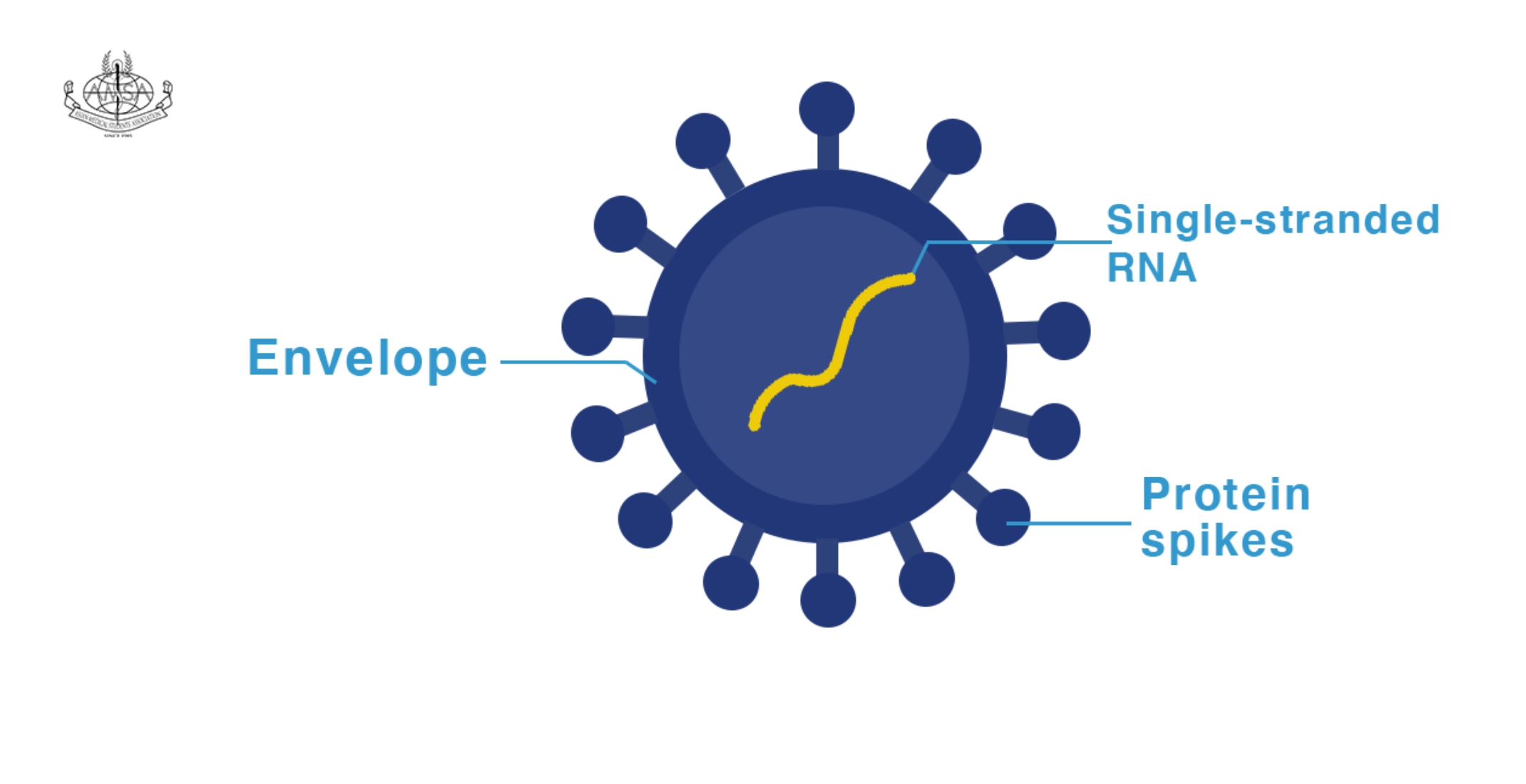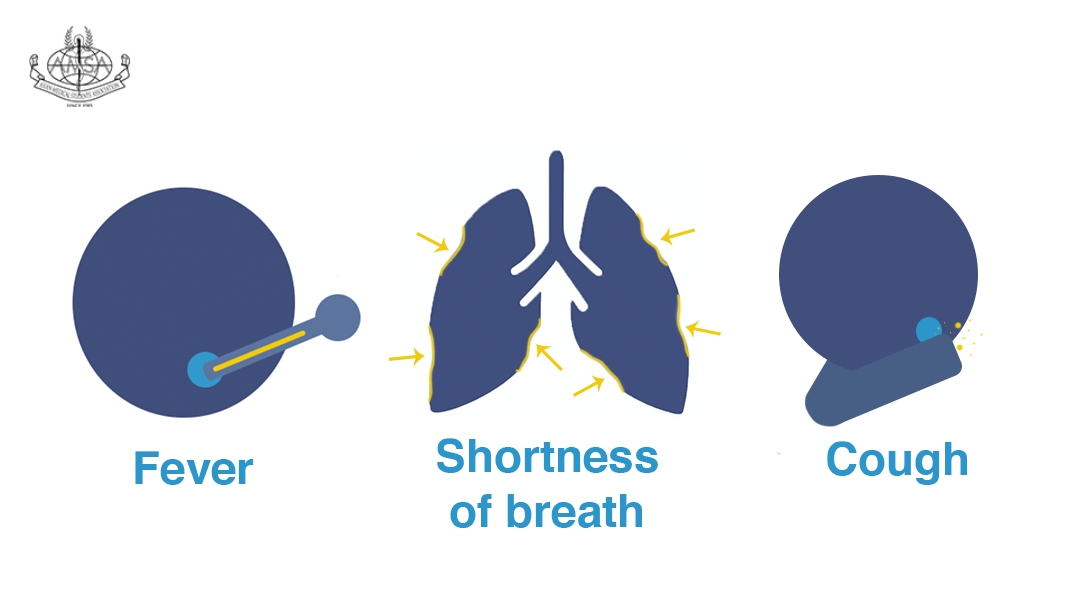
COVID-19
is caused by a virus called SARS-CoV2.
This virus belongs to family of Coronavirus that are known to cause a range of respiratory and gastrointestinal illnesses that can be common to severe.
(such as MERS and SARS)

COVID-19
was discovered in December 2019 through reports of pneumonia like illness caused by previously unknown coronavirus in Wuhan, China
The virus was called
2019 novel coronavirus
(2019-nCoV)

Officially named as
SARS-CoV2
by WHO in February 2020

SARS-CoV-2 enters the human body through eyes, nose and/or mouth
- Various studies suggest the virus enters the host cells via the ACE2 receptor.
- Incubation period is 4-6 days.
Based on a systematic review published on March 31st, current evidence suggests the following key COVID-19 epidemiologic measurements:
- Epidemic Doubling time: 3-7 days
- Reproduction number: 1.9-6.5 of secondary cases from a single individual
- Case fatality rate: 0.3%-1.4% (outside China)
- Duration of viral shedding: 8-37 days

Symptoms of COVID-19 may appear 2-14 days after exposure
The 3 main symptoms are:
Fever , Shortness of breath, Cough
Older adult and people who have underlying medical conditions (heart disease, lung disease, diabetes) have higher risk to develop serious complications.
